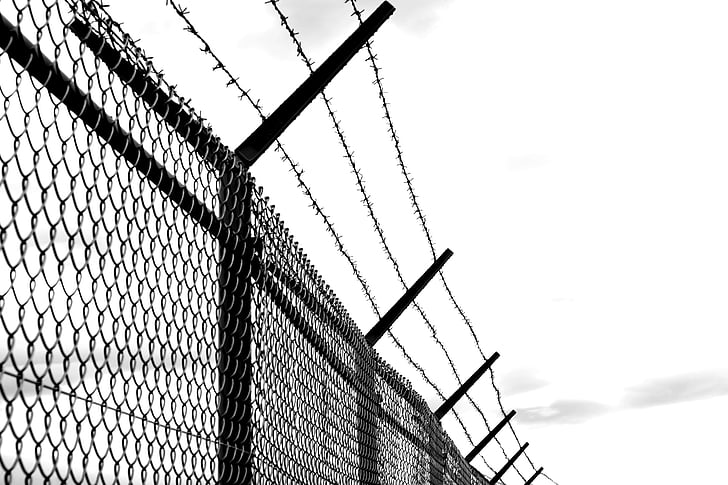
The change of presidency of the Council of the European Union offers Romania and Bulgaria new hope of joining the Schengen area by the end of this year.
Although Spain, which took over the rotating EU presidency on the 1st of July, has made the extension of the free movement area a priority, there is no guarantee that this decade-old Romanian and Bulgarian desire will be achieved in the next six months. Especially as the new Spanish presidency has several priorities and issues to deal with “at the last minute” before the spring European Parliament elections.
“The Spanish presidency of the Council of the European Union considers the entry of Bulgaria and Romania into Schengen to be one of its priorities and will work towards a consensus on this,” said the Spanish ambassador in Sofia, Alejandro Polanco.
But on European security issues, Spain also wants a reform of the migration pact with a “balance between solidarity and responsibility” of member states.
“This will require compromise and “flexibility on the part of some countries,” Polanco said at the launch of the Spanish presidency in Sofia.
“I would say that Bulgaria’s accession to Schengen in 2023 remains the main objective of the government,” Mariya Gabriel commented afterwards.
“We are counting on close cooperation with the Spanish Presidency” and we are continuing the dialogue with the countries that need to be convinced,” said Deputy Prime Minister and Foreign Minister Mariya Gabriel on behalf of the hosts, as quoted by Dnevnik. She was obviously referring to the Netherlands and Austria.
At the last vote in the Council, the Netherlands made its country’s decision conditional on the EU’s latest assessment of the rule of law in Bulgaria, while Austria has made demands of the EU on migration policy and external border protection.
The Spanish Presidency has four main priorities. Plus Ukraine
This is the fifth time Spain has held the presidency since 1986 (when the country joined the EU bloc) and the last full one before the European Parliament elections in spring 2024. The priorities and logo of the current Spanish presidency of the European Union were presented in June 2023 by Spain’s prime minister, Pedro Sánchez: promoting Europe’s reindustrialisation, advancing the ecological transition, strengthening the social pillar and reinforcing European unity, all under the motto “Europe closer together”.
A summit with the EU’s southern neighbours is expected during the Spanish EU presidency to discuss migration, food, energy security and climate issues. The next meeting of the European Political Community, which brings together the EU with countries from eastern and south-eastern Europe, the UK and Turkey, will take place between the 5th and the 6th of October in Granada.
But the war in Ukraine and the process of Ukraine’s accession to the EU are also high on the agenda for the next 6 months.
“From the European Union’s point of view on Ukraine’s accession, my presence on the first day of this six-month presidency (…) demonstrates a clear and unequivocal political commitment on the part of the EU institutions,” Pedro Sanchez said at a joint press conference with President Volodimir Zelenski on the 1st of July.
The coming months should also bring progress in the negotiations for the new migration pact. The Council of the European Union took a decisive step towards modernising EU asylum and migration rules in early June, agreeing on a negotiating position on the asylum procedure regulation and the regulation on asylum and migration management. This position will form the basis of the Council Presidency’s negotiations with the European Parliament and was welcomed by both European Commission President Ursula von der Leyen and European Parliament President Roberta Metsola.
Both pieces of legislation on which the Council reached a general approach are part of the Pact on Migration and Asylum, which consists of a set of proposals to reform EU rules on migration and asylum. This new Pact on Migration and Asylum from the 23rd of September 2020 was accompanied by a series of legislative proposals. These include a regulation on asylum and migration management and an amendment to the 2016 proposal for a regulation on asylum procedure.
New migration pact will bring common procedure across the EU
The Asylum Procedure Regulation (APR) sets out a common EU-wide procedure that Member States must follow when people apply for international protection. It streamlines procedural arrangements (e.g. length of procedure) and sets standards for the rights of asylum seekers (e.g. having access to an interpreter or the right to legal assistance and representation).
The Regulation also aims to prevent abuse of the system by establishing clear obligations for applicants to cooperate with the authorities throughout the procedure. The RPA also introduces mandatory border procedures with the aim of quickly assessing at the EU’s external borders whether applications are unfounded or inadmissible. Persons subject to the asylum procedure at the border are not allowed to enter the territory of the Member State.
The border procedure applies when an asylum seeker lodges an application at an external border crossing point, following apprehension in connection with an illegal border crossing and following disembarkation after a search and rescue operation. The procedure is obligatory for Member States if the applicant is a danger to national security or public policy, if he/she has misled the authorities with false information or by withholding information and if the applicant has a nationality with a recognition rate of less than 20%. The total duration of the asylum and border return procedure should not exceed 6 months. In order to carry out procedures at the border, Member States must establish adequate reception and human resources capacity to examine an identified number of applications and to implement return decisions at any given time.
At EU level, this adequate capacity is 30 000 persons. The adequate capacity of each Member State will be determined on the basis of a formula taking into account the number of irregular border crossings and refusals of entry over a three-year period.
The Asylum and Migration Management Regulation (AMMR) should replace the current Dublin Regulation once agreed. The Dublin Regulation lays down rules determining which Member State is responsible for examining an asylum application. The AMMR will streamline these rules and shorten the deadlines. For example, the current complex take back procedure, which aims to transfer an applicant back to the Member State responsible for his/her application, will be replaced by a simple take back notification.
To balance the current system, where a few Member States are responsible for the vast majority of asylum applications, a new solidarity mechanism is proposed that is simple, predictable and workable. The new rules combine compulsory solidarity with flexibility for Member States to choose individual contributions. These contributions include relocation, financial contributions or alternative solidarity measures such as staff deployment or capacity building measures. Member States have full freedom as to the type of solidarity they contribute. No Member State will ever be obliged to relocate.
There will be a minimum annual number of relocations from Member States where the majority of people enter the EU to Member States less exposed to such arrivals. This number is set at 30,000, while the minimum annual number for financial contributions will be set at €20,000 per resettlement. These figures may be increased if necessary, and situations where no need for solidarity is foreseen in a given year will also be taken into account.

In order to compensate for a possible shortfall in the number of promised relocations, responsibility compensation will be available as a second-tier solidarity measure in favour of Member States benefiting from solidarity.
The AMMR also contains measures aimed at preventing abuse on the part of the asylum seeker and avoiding secondary movements (when a migrant leaves the country of first arrival to seek protection or permanent resettlement elsewhere). For example, the Regulation sets out obligations for asylum seekers to lodge applications in the Member States of first entry or legal residence. It discourages secondary movements by limiting the possibilities for termination or transfer of responsibility between Member States and thus reduces the applicant’s possibilities to choose the Member State in which to lodge their application.
In addition to some disagreements between Member States, migration issues also create internal tensions. It was the issue of limiting migration that, after weeks of negotiations, led to the fall of the Dutch government led by Mark Rutte.
Rutte announced the resignation of his coalition government citing “insurmountable” differences after heated negotiations between the four ruling parties over refugee policy. An effort by Rutte’s conservative VVD party to limit the flow of asylum seekers to the Netherlands has split his four-party coalition government as two lower-ranking parties have refused to back his proposals. Tensions came to a head when Rutte asked for support for a proposal to limit the entry of children of war refugees already in the Netherlands and force families to wait at least two years before reuniting, according to Reuters.
A brief history of Romania and Bulgaria’s Schengen accession
The accession of Romania and Bulgaria to the Schengen area was not on the agenda of the last meeting of the Swedish Presidency of the Council of Ministers of Home Affairs in June, although the state of the free movement area was discussed. However, the European Commission continues to give assurances that Romania and Bulgaria’s accession to the Schengen area in 2023 remains a priority, and the European Commissioner for Home Affairs, Sweden’s Ylva Johansson, has repeatedly stated that she will do her utmost to have a favourable decision by the end of this year.
Romanians’ disappointment over Austria’s no vote on Schengen membership on the 8th of December 2022 has turned into action. In the days following the JHA Council vote, calls for a boycott, pictures of Austrian-owned banks cutting cards and promises that Austrian ski resorts would no longer have Romanian customers circulated on social media. At the same time, in neighbouring Bulgaria, with which Romania is being treated as a “package deal” on the Schengen issue, part of the population, fed up with being treated as “second class” in Europe, is calling for the formation of a “Little Schengen”, which would include Romania and Turkey.
Romania’s fulfilment of the criteria set out in the Schengen acquis was acknowledged on the 9th of June 2011, at the Justice and Home Affairs Council meeting. Prior to that, on the 8th of June 2011, the European Parliament gave a favourable opinion on the draft Decision on the accession of Romania and Bulgaria to Schengen. Romania’s successful completion of the measures provided for in the Schengen acquis was also confirmed by the European Council (the 13th -14th of December 2012).
“Accession to the Schengen area is a right and an obligation assumed by the Treaty of Accession to the EU (Article 4 of the Protocol concerning the conditions and arrangements for admission of the Republic of Bulgaria and Romania to the European Union, annexed to the Treaty of Accession of Romania and Bulgaria), Romania wishing to participate in all forms of cooperation aimed at deepening European integration. Romania has been de facto ensuring the security of the EU’s external borders since its accession to the EU in January 2007. The elimination of controls at the internal borders of the European Union is one of the most visible and important effects of the European integration process”, reads the Romanian MFA website.



 Subscribe
Subscribe